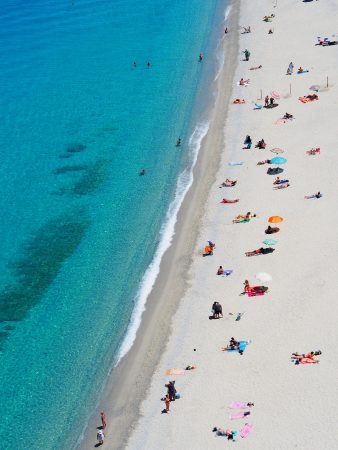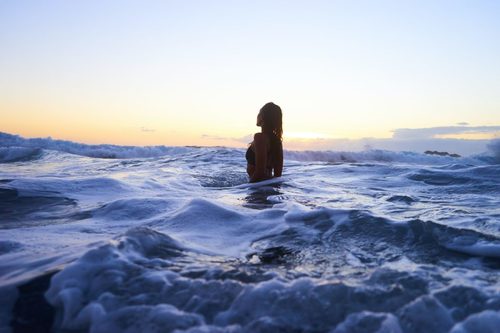We’ve got our beach bags packed and we’re ready to go. First, before the lug the family along for a day of lazing on the dunes and swimming in the sea, it’s crucial to prioritise safety.
Understanding potential risks and knowing how to navigate them while you are swimming in the sea ensures a safe and happy experience for everyone.
Here are ten essential tips for staying safe while swimming at the beach:
Recognising rip currents
Spotting rip currents can save lives. Watch for changes in water colour, choppier waves, or a line of foam extending outward. Look for a gap in the breaking waves or a channel of churning, turbulent water. These currents might also carry debris. Rip currents may also appear calm, but they pull forcefully seaward.
Neglecting to notice them can lead to being pulled away from the shore, causing exhaustion and potential drowning. If caught in one, stay calm, swim parallel to the shore until out of the current’s pull, then swim towards land.
Where to swim
Swim parallel to the shore rather than heading straight out. Swimming straight out into the ocean increases the risk of getting lost or facing difficulties in returning. This approach makes it easier to get back to shore if needed.

Unsplash
Be one with the waves
Understanding wave patterns is essential.Misjudging them can result in being thrown around or pushed by strong waves, leading to injuries or disorientation, especially in more choppy waters. Learn to anticipate their strength and direction. Dive under larger waves to prevent being pushed around or tossed by their force.
Avoiding going head first
Never dive headfirst into unknown waters. Diving headfirst poses the risk of severe head or neck injuries caused by hidden rocks or shallow depths, potentially resulting in serious injuries. Always enter feet first to be safe.
Beach flags and signs
Familiarise yourself with beach warning flags. Different colours signify various warnings, such as dangerous currents or the presence of marine life. Pay close attention to these indicators.

Unsplash
Watch out for sea critters
Exercise caution around marine life like jellyfish and stingrays who call the ocean their home. Shuffle your feet when entering the water to alert creatures and avoid stepping on them.
Do not drink and swim
Swimming in the ocean while under the influence of alcohol is highly risky. Alcohol impairs coordination and reaction time, increasing the likelihood of accidents or drowning. It can also hinder swimming abilities and perception of dangers like currents or exhaustion, significantly elevating the risk of injury or fatalities. Don’t drink and swim, period.
ALSO SEE:
Feature Image: Unsplash

